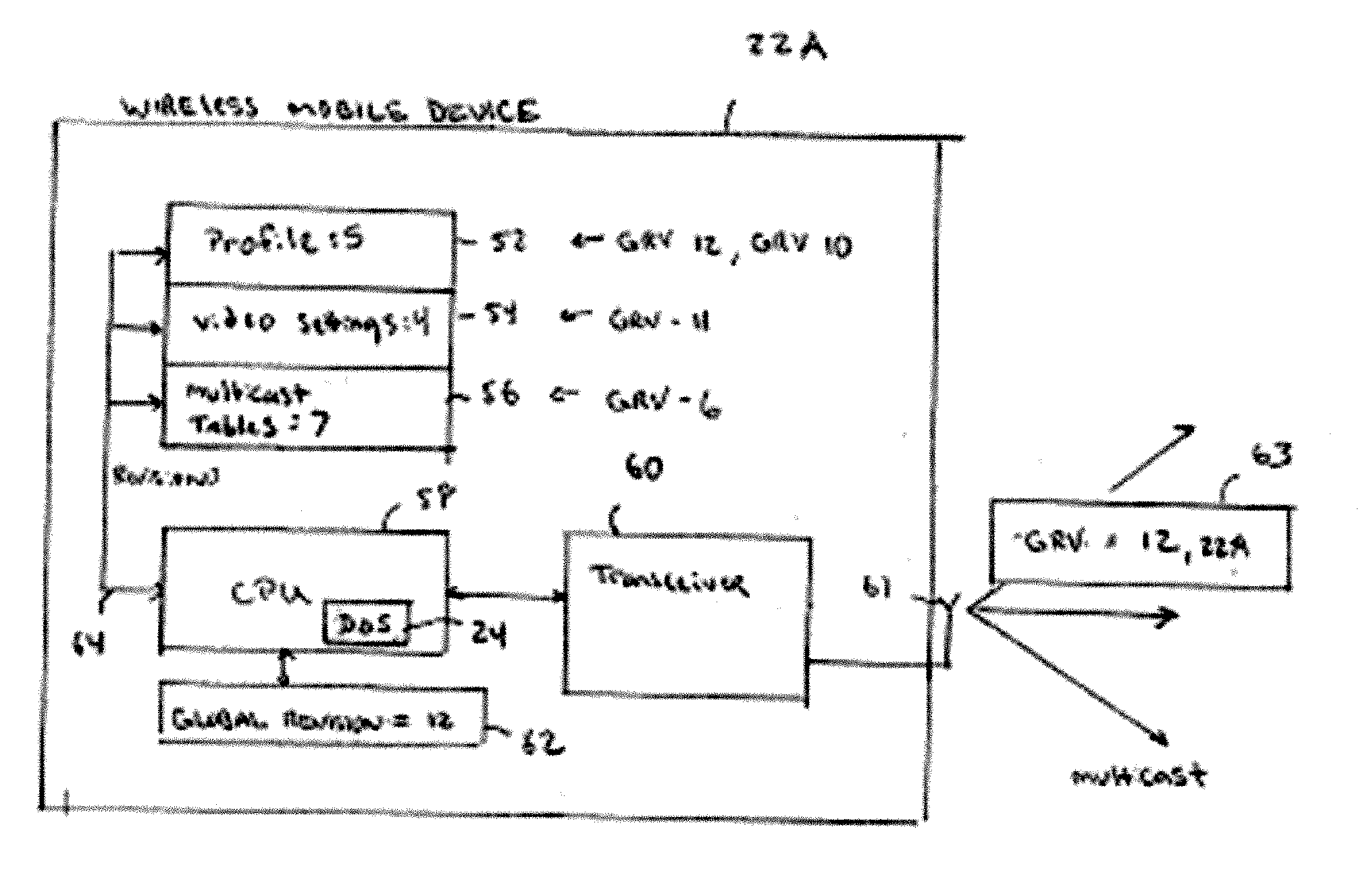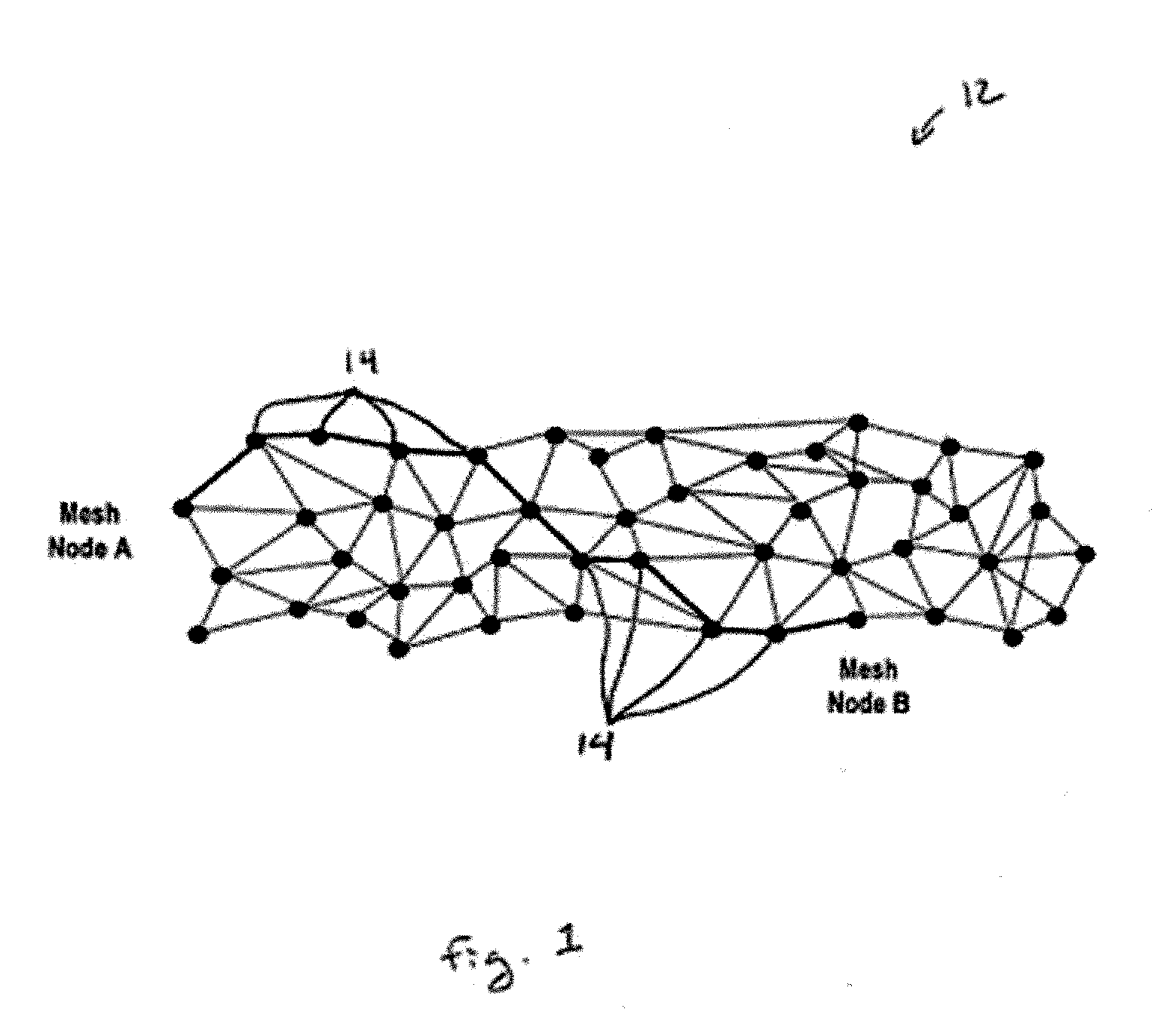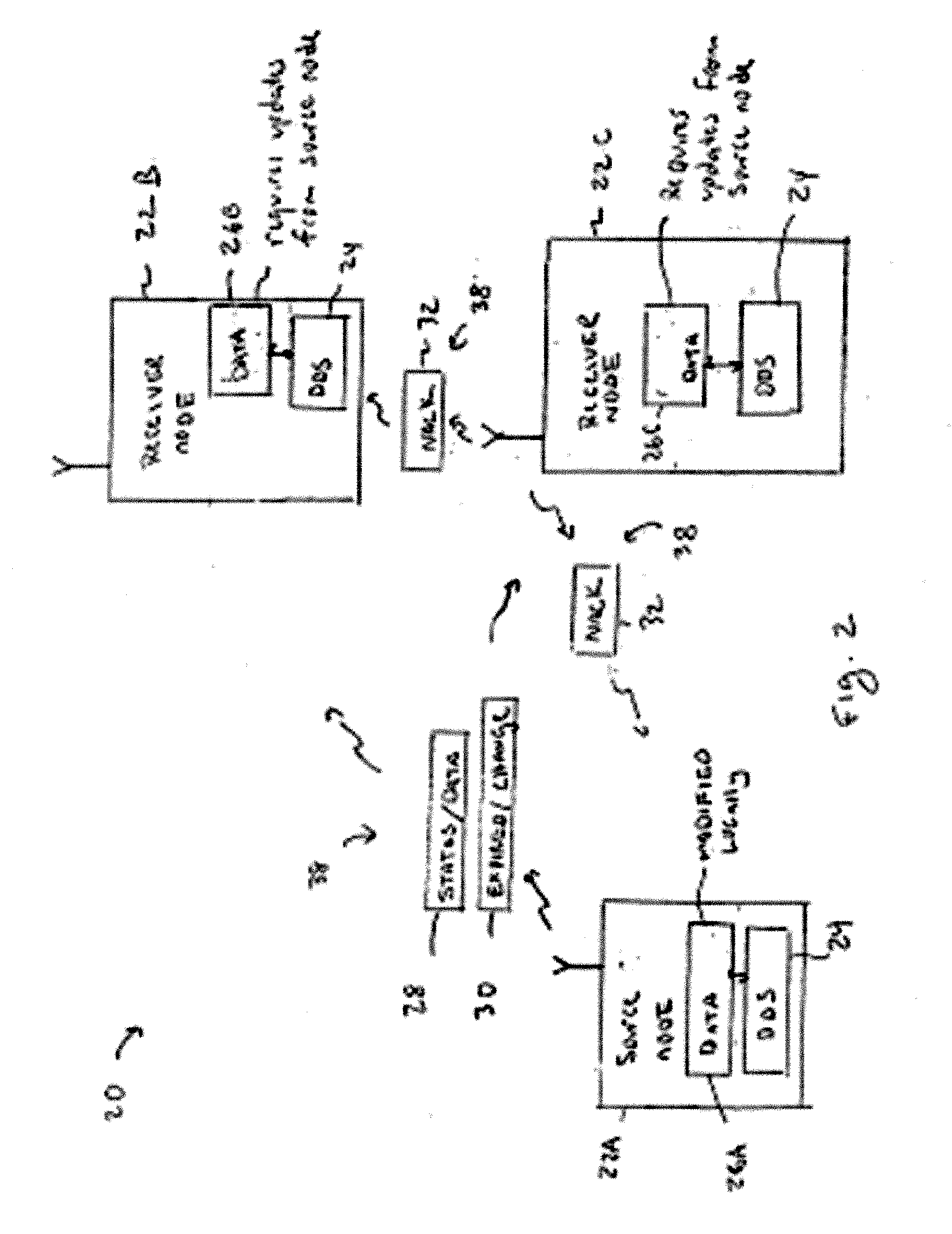Reliable message distribution in an ad hoc mesh network
a mesh network and message technology, applied in the field of reliable message distribution in an ad hoc mesh network, can solve the problems of inefficiency of current techniques for maintaining data consistency between different mobile nodes, and achieve the effect of reasonable reliability and minimal traffi
- Summary
- Abstract
- Description
- Claims
- Application Information
AI Technical Summary
Benefits of technology
Problems solved by technology
Method used
Image
Examples
Embodiment Construction
[0001] This application claims priority from U.S. Provisional Application Serial No. 60 / 543,352, filed February 9, 2004.
BACKGROUND
[0002]FIG. 1 shows a typical mesh network 12 with a node A communicating with a node B through multiple hops, links, nodes 14, etc. The links 14 can be any combination of wired or wireless mobile communication devices such as a portable computers that may include wireless modems, network routers, switches, Personal Digital Assistants (PDAs), cell phones, or any other type of mobile processing device that can communicate within mesh network 12.
[0003] The network nodes 14 in mesh network 12 all communicate by sending messages to each other using the Internet Protocol (IP). Each message consists of one or more multicast User Datagram Protocol (UDP) packets. Each node 14 includes one or more network interfaces which are all members which may be part of a same multicast group. Each node has an associated nodeid used for identifying both the source and the ...
PUM
 Login to View More
Login to View More Abstract
Description
Claims
Application Information
 Login to View More
Login to View More - R&D
- Intellectual Property
- Life Sciences
- Materials
- Tech Scout
- Unparalleled Data Quality
- Higher Quality Content
- 60% Fewer Hallucinations
Browse by: Latest US Patents, China's latest patents, Technical Efficacy Thesaurus, Application Domain, Technology Topic, Popular Technical Reports.
© 2025 PatSnap. All rights reserved.Legal|Privacy policy|Modern Slavery Act Transparency Statement|Sitemap|About US| Contact US: help@patsnap.com



